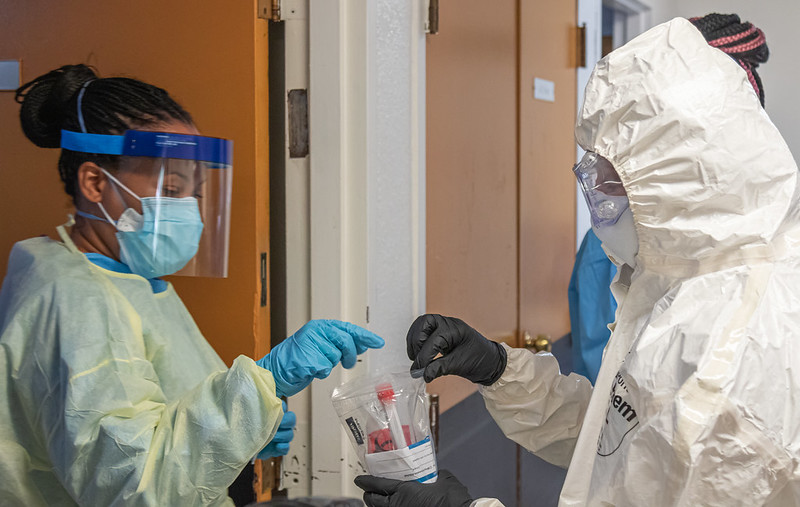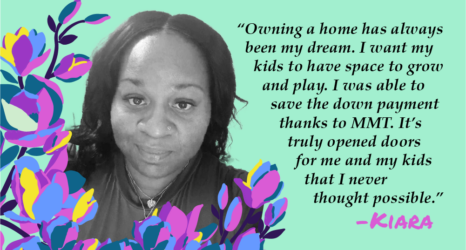
A recent report shows how historical racism results in higher COVID-19 death rates among Black and brown people in the U.S.
Released by released by humanitarian organization devoted to ending poverty CARE, the report uses Rapid Gender Analysis (RGA)—a mode of examination designed to highlight the tangible effects of “historic and institutional systems of oppression, gender bias and racism targeting Black, Indigenous and people of color (BIPOC).”
By using the RGA, CARE draws attention to a lack of categorization in COVID data—which obscures the pandemic’s specific effects on marginalized communities.
In perhaps one of its most striking data points, the report shows Black people make up 19.2 percent of U.S. deaths related to COVID-19—yet only 13.4 percent of the country’s general population.
Poverty understandably compounds the effects of the coronavirus, by posing a barrier to healthcare access. And poverty itself is a facet of systemic racism—as the highest poverty rates by race are found among Native (25.4 percent), Black (20.8 percent) and Latinx (17.6 percent) communities.
Native communities have also experienced disproportionate consequences from the pandemic, and have the highest hospitalization rates for COVID—closely followed by Black Americans.
Systemic Racism in Health Care
Understanding why coronavirus rates are so much higher among communities of color requires an understanding of the ways in which systemic racism has translated to a lack of access to medical care in the U.S.
For starters, over 25 percent of uninsured individuals are Latinx and about 14 percent are Black, whereas only 8 percent are white. Individuals who don’t have insurance—often essential workers, who are more often people of color—can face barriers to even the most fundamental forms of healthcare. These obstacles can mean the difference between life and death, with or without the added pressures of a pandemic.
Whether they are insured or not, long-standing racism ensures communities of color are far less likely to have access to health care in the first place, because of underinvestment in resource-poor communities, poverty and medical racism.
And even for those with access, communities of color are still far less likely to seek out health care or trust medical professionals, due to a long and brutal history of discrimination and abuse in the field. Medical racism is a proven phenomenon that results in very real treatment disparities—for example, Black patients are more likely to be under-prescribed when it comes to pain management.
BIPOC Women Must Navigate High Risks
Health disparities are also compounded for women of color, who already face increased (often unpaid) caregiving burdens—the report highlights how many sexual and reproductive health services have been deemed non-essential during the pandemic, raising barriers to receive assistance that many women depend on.
Even under normal circumstances, Black women are more than three times as likely to die during childbirth as a result of medical racism—and a lack of access to reproductive health care due to the pandemic will only heighten these disparities.
These access barriers compound both the pre-existing conditions that make COVID-19 symptoms worse and a reluctance to seek healthcare—resulting in massive disparities when it comes to the effects of the pandemic on BIPOC communities.
Tjada D’Oyen McKenna, COO of CARE, said, of the report:
“This RGA reinforced what CARE has found to be true in emergency contexts throughout history and the world—crises have a greater impact on populations that were already vulnerable prior to the crisis, particularly poor women and girls, and effective emergency response must be informed by an intersectional, gendered perspective.”
What Can Be Done to Level the Health Care Playing Field?
So, what must happen to help offset these structural health disparities?
CARE’s report includes several key recommendations for the U.S. government and health care institutions.
First and foremost, federal and state agencies must be more consistent and transparent in the collection and publishing of data. Health disparities are lost when data is flattened—so federal agencies that track COVID-19 data, like the CDC, have a responsibility to ensure the availability of systematic data broken down by sex, class, race and age. This helps to measure the direct and indirect effects of COVID-19 on specific populations.
Inadequately reported data directly conceals health disparities experienced in marginalized groups. And policy responses that don’t reflect these disparities are at best ineffective and at worst may do further harm to already vulnerable populations.
By specifically supporting historically underserved communities, institutions can begin to fight historic injustice and prevent more severe coronavirus outbreaks across the nation.
“Change is long overdue, and the most recent wave of protests have made it clear that enough is enough,” said McKenna. “Effective policy responses to the pandemic must direct resources to the most vulnerable populations, elevate the voices and leadership of BIPOC women and provide robust support for critical economic and social services.”
These demonstrated disparities will only continue to widen as the COVID-19 pandemic carries on. Institutions and agencies must fundamentally change the way they handle COVID-19 data now—or Black and brown communities will continue to suffer.





